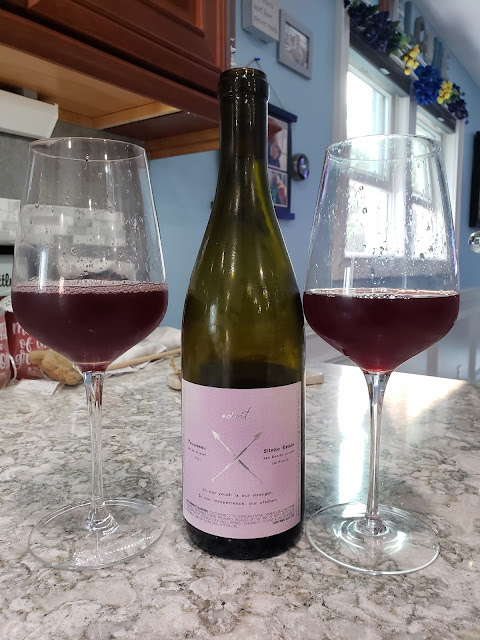Jamesport 2019 Twenty Nineteen Sauvage, Wild/Untouched/Fierce Tasting & Commentary
Before sipping this fine wine, both the name and the label give you a clear idea of what to expect. First, the term “Sauvage” is French for savage in a strict translation, but it translates to a wine fermented with wild or indigenous yeasts in the context of wine. Said a unique way, squeeze the grapes, leave the container open and let nature do its thing, hence this wine is a fine example of indigenous Long Island yeasts. The label states that the grapes are a “Rauscedo Clone” planted at the Early Rising Farm in Cutchogue in 2012. A bit more digging through the UC Davis Foundation Plant Services index, the grape is most likely a Sauvignon Blanc Proprietary clone 389 from Vivai Cooperativi Rauscedo in Italy, arriving in the United States in 2012.
The
grapes were hand-picked, and the whole cluster pressed, allowing some tannin
infusion from the stems. The
fermentation and aging took place for 11 months in French Oak Puncheons
(British word for large cask holding between 70 and 120 gallons).
Now onto
the pouring and tasting of the wine; first, a paper acid test strip indicated
that the Ph is about 3.0 putting this wine between a New Zealand and French
Sauvignon Blanc. The Alcohol is moderate at about 13% ABV. Using a 2oz pour at 52 F in an ISO standard
tasting glass, the wine showed a clear, bright yellow straw color. The nose is light with notes of toasted
almonds and tropical fruit. The
mouthfeel is medium with good acid upfront—citrus fruits such as Grapefruit and
present with a pleasant finish of pineapple.
There are slight notes of creaminess from the oak and an ever so slight
hint of tannins, creating a well-balanced wine.
The wine presents down the center between New Zealand Marlborough
Sauvignon Blanc and a very upscale French Sancerre.
In short, a fine wine to pair with Blue Point
Oyster or a light chicken dish on a sunny afternoon.
 |
| JAMESPORT TWENTY NINETEEN SAUVAGE ENJOYING |




Comments
Post a Comment